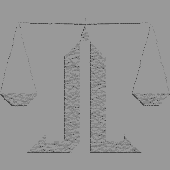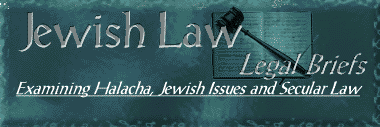

Supreme Court of the United States
ARGUMENT
I
THIS COURT'S EARLY DECISIONS
PERMITTED THE STATE TO PROVIDE
RELIGIOUS SCHOOLS WITH SECULAR,
NEUTRAL AND NONIDEOLOGICAL MATERIALS
The Court's majority opinion in Lemon v. Kurtzman, 403 U.S. 602, 616-17 (1971), summarized the law before 1970 as follows:
Our decisions from Everson to Allen have permitted the States to provide church-related schools with secular, neutral or nonideological services, facilities, or materials. Bus transportation, school lunches, public health services, and secular textbooks supplied in common to all students were not thought to offend the Establishment Clause.
Although the particular program involved in Everson v. Board of Education, 330 U.S. 1 (1947), provided reimbursement for bus transportation "on regular busses operated by the public transportation system" (330 U.S. at 3), the state statute involved in Everson was not limited to public transportation. It authorized any "transportation . . . to and from school." See 330 U.S. 30, n.5. Hence, even a school bus designated for a particular parochial school that transported children to and from that school may constitutionally be financed out of tax revenues. The reason is, as the Court stated in its Lemon opinion, that bus transportation – like school lunches and health services – is by its nature, secular and nonideological. See 403 U.S. at 617.
The Court explained in its Everson opinion that banning financial assistance for bus transportation would be tantamount to denying religious believers "the benefits of public welfare legislation" simply because of their faith or lack of it. 330 U.S. at 16. Bus transportation of children to and from school was viewed as a "general program to help parents get their children, regardless of their religion, safely and expeditiously to and from accredited schools." 330 U.S. at 18.
The Justices in the Everson majority were not oblivious to the argument forcefully made in Justice Rutledge's dissenting opinion (330 U.S. at 28-63). He argued that "transportation, where it is needed, is as essential to education as any other element" (330 U.S. at 47) and that transportation of students to a religious school is as essential as "the very teaching in the classroom or payment of the teacher's sustenance" (330 U.S. at 48). It was never suggested that the possibility that students might be indoctrinated in religion while they are on the bus – that they might sing hymns or recite prayers while traveling to or from school – would render a program of public financing unconstitutional.
By the same token, the Court held in Board of Education v. Allen, 392 U.S. 236 (1968), that governmental loans of secular textbooks to parochial-school students is constitutionally permissible. The Court recognized that parochial schools perform, "in addition to their sectarian function, the task of secular education." 392 U.S. at 248. The Allen Court explicitly rejected the proposition that "all teaching in a sectarian school is religious or that the processes of secular and religious training are so intertwined that secular textbooks furnished to students by the public are in fact instrumental in the teaching of religion." Ibid. Justice Douglas' dissent (392 U.S. at 254-66) argued, at great length, that a textbook is at "the very heart of education in a parochial school." 392 U.S. at 257. But the majority looked not to the most extreme hypothetical religious use of the statute that could be imagined but to the secular books that routine application of the law contemplated. On this basis, the Court sustained the textbooks loan program.
The majority opinion in Lemon v. Kurtzman, 403 U.S. 602 (1971), observed that the Allen Court "refused to make assumptions, on a meager record, about the religious content of the text-books that the State would be asked to provide." 403 U.S. at 617. The Lemon Court, however, distinguished between the "ideological character" of teachers and the "ideological character" of books. Whereas a textbook's content is ascertainable, a teacher's "handling of a subject" was held to be too susceptible to the religious indoctrination that is the primary mission of the sectarian school. On this account, the Court concluded in Lemon (403 U.S. at 617):
We cannot ignore the danger that a teacher under religious control and discipline poses to the separation of the religious from the purely secular aspects of pre-college education. The conflict of functions inheres in the situation.
Indeed, Chief Justice Burger’s opinion in Tilton v. Richardson, 403 U.S. 672 (1971), which was a companion case to Lemon v. Kurtzman, explicitly noted the difference between objects such as textbooks or buildings that are intrinsically "nonideological" and "religiously neutral" and the services of teachers, who may engage in religious instruction. 403 U.S. at 687-88.
The Lemon Court invalidated programs that provided for governmental financing of the salaries of teachers of secular subjects because of "the potential for impermissible fostering of religion." 403 U.S. at 619. But the Lemon Court never questioned the rationale of Everson and Allen, under which government funding of inherently secular services and materials such as bus-transportation and textbooks was constitutionally permissible even at sectarian schools.
II
MEEK AND WOLMAN WERE ERRONEOUSLY DECIDED AND SHOULD BE OVERRULED
The first decision of this Court that invalidated a government-financed program that provided secular, nonideological and neutral instructional materials to religious schools along with all other private and public schools was Meek v. Pittenger, 421 U.S. 349 (1975). At issue in that case was the state's purchase and distribution to private schools, including religious schools, of instructional materials such as books, periodicals, musical scores, maps, sound recordings, films, and videotapes, as well as instructional equipment such as projectors, recording equipment, laboratory equipment, and "any other educational secular, neutral, non-ideological equipment as may be of benefit to the instruction of non-public school children and are presently or hereafter provided for public school children . . . . " 421 U.S. at 355 n.4.
Two judges of the three-judge district court that passed on this statute (Circuit Judge Gibbons and District Judge Bechtle) concluded that there is no constitutional distinction "between secular, neutral, nonideological textbooks, on the one hand, and secular, neutral, nonideological 'books, periodicals, documents, pamphlets, photographs, reproductions, pictorial or graphic works, musical scores, maps, charts, globes, sound recordings, . . . processed slides, transparencies, films, filmstrips, kinescopes, and videotapes' on the other." 374 F. Supp. 639, 659 (E.D. Pa. 1974) (ellipsis in original). The majority of the three-judge court then said (Ibid):
If the public authorities can be trusted with selecting secular, neutral, nonideological textbooks for use by students in religious schools, they can be trusted to make the same judgment with respect to those instructional materials which in this nonsequential age have to some extent replaced textbooks as teaching media. As with textbooks, this statute is, from the point of view of primary effect, largely self-enforcing since by hypothesis the instructional materials will be the same as are made available in the public schools.
The district court went on to distinguish between "equipment which from its very nature is incapable of diversion to a religious purpose," such as laboratory and gymnasium equipment, and a projector, which could be used to show a religious film. Since the latter could "easily be adapted to a religious use," the district court found that it could not be constitutionally provided to religious schools. Equipment that is "self-policing," on the other hand, was found to be constitutionally permissible. 374 F. Supp. at 661.
Justices Rehnquist and White in their dissent agreed with the district court majority that there is no meaningful difference between the textbooks permitted by Allen and the instructional materials and equipment at issue in Meek. 421 U.S. at 391. The majority of the Court in Meek disallowed the financing of instructional materials not because those materials could potentially be used for religious instruction, but because the "primary beneficiaries" of the instructional materials and equipment loan provisions were church-related or religiously affiliated schools. 421 U.S. at 364. The Court's opinion also noted that the religious schools provide an integrated secular and religious education, and that the purpose of the schools is to inculcate religious values and belief. 421 U.S. at 366.
In Wolman v. Walter, 433 U.S. 229 (1977), a majority of the Court invalidated a governmental loan of neutral and secular instructional materials and equipment because "it inescapably has the primary effect of providing a direct and substantial advancement of the sectarian enterprise." 433 U.S. at 250. Justices Rehnquist and White again dissented for the reasons they had stated in prior opinions (433 U.S. at 255), and Justice Powell also noted that Allen, which is still good law, would sustain governmental loans of materials that are "incapable of diversion to religious uses." 433 U.S. at 263.
Both Meek and Wolman were, we submit, unjustified departures from the clear lessons of Everson and Allen. Materials and equipment that are, on their face, devoid of any religious content are indistinguishable from bus transportation and secular textbooks. This is true even if the materials and equipment could occasionally be "diverted" to some religious use – and is certainly true if they are "self-policing" and cannot, under ordinary circumstances, be used for religious indoctrination.
The prohibition of the Establishment Clause is not designed to forbid religious schools from using ordinary secular objects as a means of teaching religious values. Common natural phenomena can be used to convey religious messages. If the students eat sandwiches for lunch, they may make a blessing over the bread. Neither the blessing nor the teaching of Deuteronomy (8:3) that "man does not live by bread alone" turns a publicly financed school lunch into a governmentally forbidden tool of religious indoctrination.
Nor must a literary classic be banned because a teacher may use it for a religiously related message. If Shakespeare’s King Lear is utilized to teach the religious duty under the Fifth Commandment to honor one’s father, the classic text, universally admired for its secular worth, is not to be embargoed at all parochial schools.
The prohibition against governmental action "respecting an establishment of religion" cannot reach governmentally financed materials that are totally devoid of religious content simply because private teachers of religion can use those materials to indoctrinate. The religion, in any such instance, is being provided by the private teacher, not by the governmental agency.
The error of the Meek and Wolman decisions and the absurd consequences of their holdings was tellingly summarized in Chief Justice Rehnquist's dissent in Wallace v. Jaffree, 472 U.S. 38 (1985), when he compared what is now permissible under Everson and Allen and what is forbidden by Meek and Wolman (472 U.S. at 110-11, footnotes omitted):
For example, a State may lend to parochial school children geography textbooks that contain maps of the United States, but the State may not lend maps of the United States for use in geography class. A State may lend textbooks on American colonial history, but it may not lend a film on George Washington, or a film projector to show it in history class. A State may lend classroom workbooks, but may not lend workbooks in which the parochial school children write, thus rendering them nonreusable. A State may pay for bus transportation to religious schools, but may not pay for bus transportation from the parochial school to the public zoo or natural history museum for a field trip.
In each of the prohibited instances mentioned in the list quoted above (and in many of the others that follow in the dissent's enumeration of anomalies), the precedent that is cited is either Meek or Wolman. These two decisions have done incalculable harm not only to almost a quarter-century of students attending religious schools but also to all efforts to ascribe rationality to this Court's constitutional doctrine on permissible governmental aid to religious schools.
1 | 2 | 3 | 4 | 5 | 6
Page 4 of 6 |
